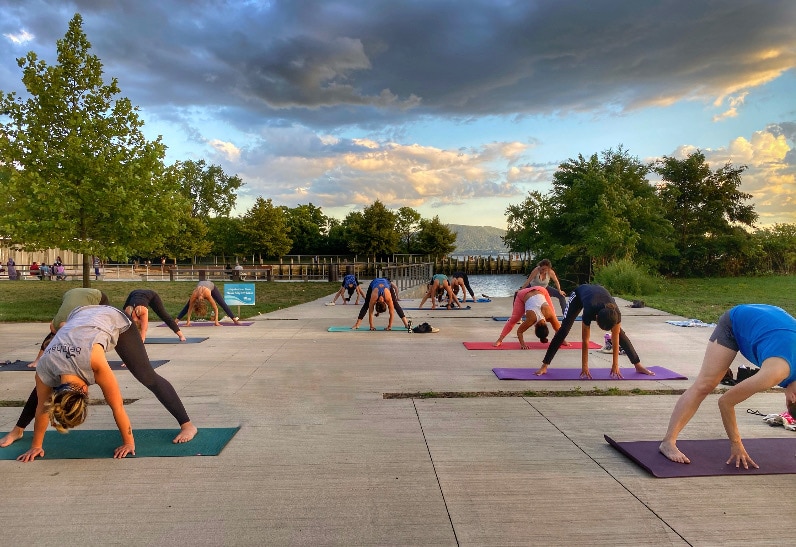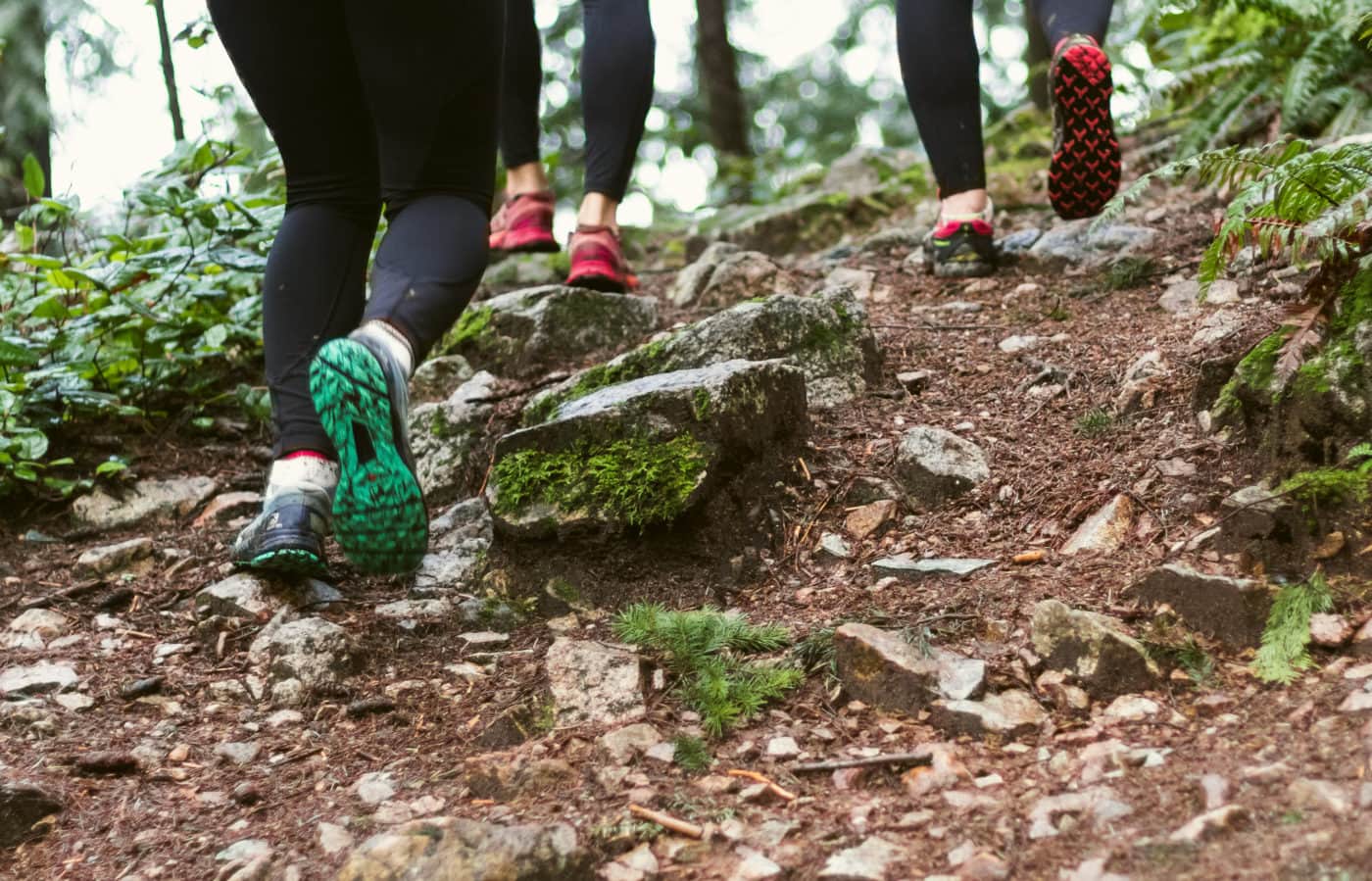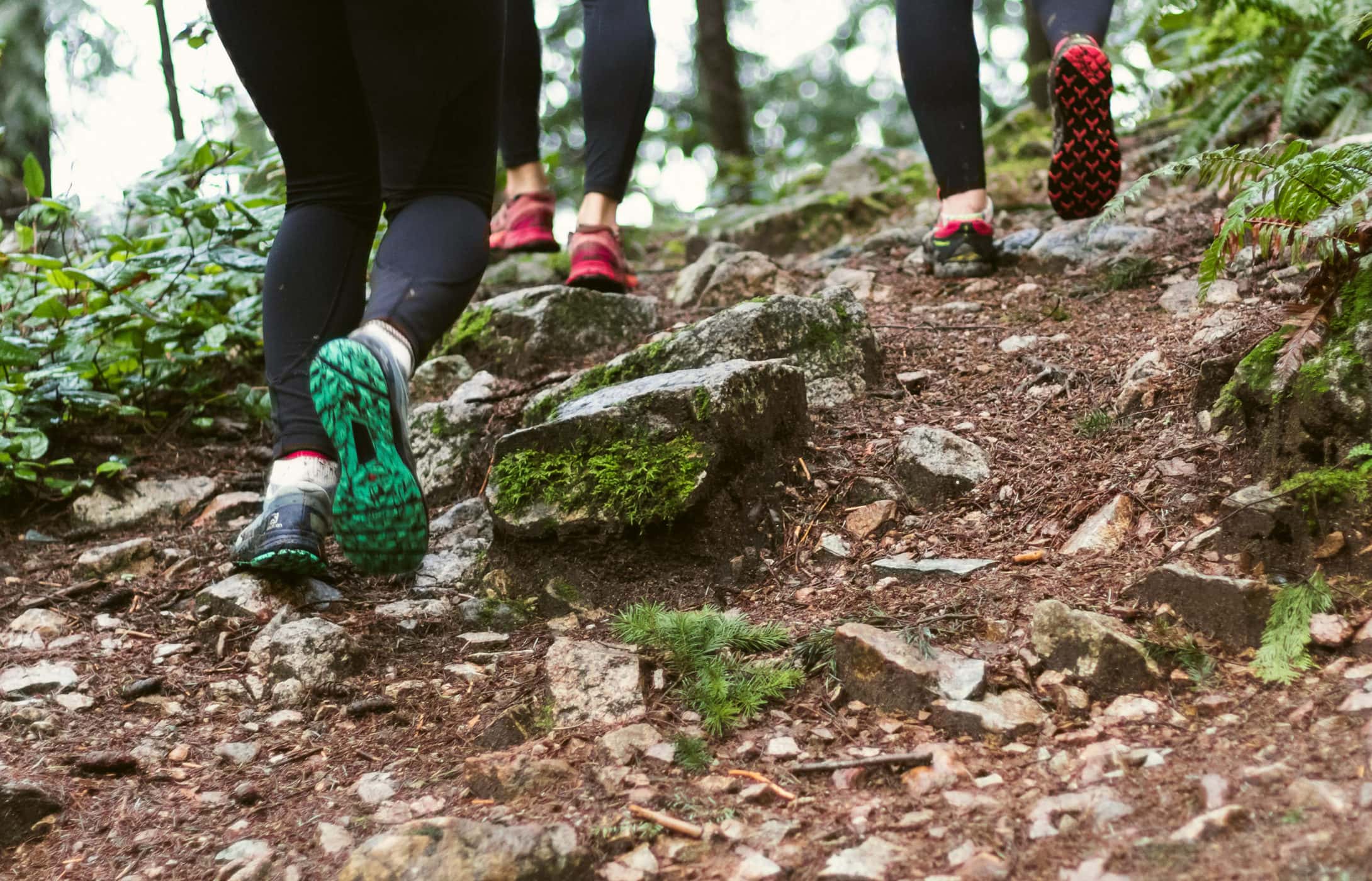After months of lockdown limbo, gyms and fitness centers in New York State are beginning to reopen. The pandemic drove millions to shift exercise outside, to parks and beyond, in the meantime. It seems like everybody’s getting out there — including celebs like DJ Khaled, who says when he’s biking a trail, he’s “just vibin’.” Experts say those healthy new habits have been beneficial — not only for health, but for public access, community ties, and climate change. Will they last?
For many, a good chunk of quarantine has been spent breaking out their old pair of running shoes or revisiting old grade-school gym class exercises — often in open air. On the streets and stretches of green within the Hudson Valley, people like Ryan Naccarato have adapting by using their outdoor surroundings for a workout.
Since July, the Kingston native has been holding 2-3 boot camps per week, sessions in which participants run, jump, squat, skip and climb their way around the various pavements and parks of the historic city. A lifelong athlete and now school athletic director, Naccarato started out like his students: counting the days till he could get back into the weight room. At first, he was blind to the opportunities around him.
“I was just outside — riding my bike, walking, running the streets of downtown — and I was like, ‘Oh my goodness, there are so many elements you can use to get a workout,’” he says. A few weeks of planning online and off eventually had him and the team at Hudson Valley Ambition relay racing and racking up reps at spots such as Hasbrouck Park downtown and Kingston Point Beach by the Hudson River. Regardless of your goals, the public spots around you can act as training grounds for your own pursuits.
The kinds of activities that encompass physical fitness have expanded greatly since the bygone era of Muscle Beach in the 1940s and ’50s, when disciplined enthusiasts would publicly perform feats of strength and acrobatics glamorized by their outdoor setting: beachside, under the golden California sun.
The public obsession with physical fitness really hit a boom with the ’60s discovery of aerobics or cardio, which emphasized the need to get the lungs pushing and blood pumping. Its subsequent exercise crazes, both largely outdoors (jogging) and in (dance aerobics), peaked in the ’80s, according to Natalia Petrzela, an associate professor of American history at The New School who is writing a book about American fitness culture.

The advent of the wellness industry in the late 2000s led to an explosion in at-home fitness options — but often with exorbitant price-tags that limited widespread access. Like gyms, they often took electricity and temperature control as well. That power often wasn’t cleanly produced, leading exercise to contribute to greenhouse gas emissions.
Enter parks, whose free facilities offer a platform for thousands looking for safe, open spaces during a lockdown. They’ve helped level things out. “You have this resurgence of the most accessible forms of fitness: people going walking, running, playing outside, using city tennis courts, et cetera,” Petrzela says. “That is something that I hope that we can clearly build on as a culture and a community.”
Parks improve public health just as much as they do community ties. A robust body of research says that even a brief time spent outdoors can lead to tremendous gains in a person’s physical and mental health. It can also keep people in greater touch with natural rhythms, from the circadian sleep-wake cycle spurred by daylight and darkness to the changing seasons and weather patterns.
“The beautiful thing about parks is that you don’t have to be physically active in that space to enjoy the benefits of that space,” says Sadiya Muqueeth, Director of Community Health at the Trust for Public Land. The trust promotes the proliferation of green spaces for the 100 million people nationwide who don’t live within a 10-minute walk from a park.

Parks also serve as natural cooling centers in cities by buffering the heat held by asphalt and concrete and dropping the surrounding area’s temperature by several degrees, Muqueeth says. Summer 2020 has already been one of the hottest on record, and with climate change underway, we’ll all need some relief from the heat waves of the future.
For now, new outdoor-workout enthusiasts like Naccarato recommend starting small and working your way up no matter what activity you choose. If you can’t run a mile, jog, and if you can’t jog, try a brisk walk. Don’t limit yourself to just moving at a designated time. Stretching throughout the day can help you maintain the mobility that sometimes gets overlooked in a machine-centered gym routine.
And of course, don’t take the scenery or structures around you for granted. Whether it’s a state park or a playground, an open-air environment could be the boost you need to keep at it.


